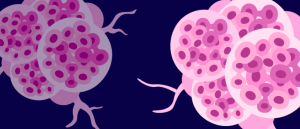Novel nanocarrier could transform therapeutic antibody delivery

Original story from the Institute of Science Tokyo (Japan).
Researchers create nanomachines using metal and polyphenols, which enhance targeted intracellular delivery of antibodies for cancer therapy.
Antibodies are Y-shaped proteins produced by the body’s immune system to identify and neutralize foreign substances. Therapeutic antibodies are specially engineered proteins derived from natural antibodies that target cancer cells by recognizing unique markers or antigens on the tumor surfaces. These proteins enable the immune system to attack tumors more effectively while sparing healthy tissues.
Although therapeutic antibodies have proven to be effective against cancer by targeting cell surfaces, these show limited efficacy inside cells due to their inability to cross cell membranes and escape endosomal entrapment – where molecules become trapped inside endosomes (membrane-bound compartments) within the cell. To overcome this barrier, researchers are now exploring different strategies to address the endosomal entrapment of antibodies.
Addressing this challenge, a research team led by Assistant Professor Yuto Honda and Professor Nobuhiro Nishiyama from the Laboratory for Chemistry and Life Science, Institute of Science Tokyo (Science Tokyo; Japan), has developed a novel nanomachine loaded with antibodies by utilizing polyphenols, a class of compounds found in wine. The technology was developed in collaboration with the Innovation Center of Nano Medicine, a division of the Kawasaki Institute of Industrial Promotion (Japan).
The study describes the design of a metal–phenolic network (MPN) polymeric nanocarrier, which enables precise intracellular delivery of therapeutic antibodies into cancer cells. Using polyphenols, the approach utilizes a unique mechanism for endosomal escape and delivery of the antibodies.
“We developed a nanomachine using polyphenols, polyethylene glycol (PEG) and metal ions to encapsulate the antibodies,” explained Honda. “Once inside the cells, the metal ion-polyphenolic group network triggers a buffer effect which results in the bursting of endosomes, releasing the antibodies at the target site.”
 A genomic test for predicting chemoresistance
A genomic test for predicting chemoresistance
A genomic test for successfully predicting whether cancer will resist common types of chemotherapy has been developed.
To develop the nanocarrier system, the researchers started by conjugating a polyphenol compound, tannic acid (TA), with PEG to form PEG–TA. PEG is a polymer with high biocompatibility and stealth properties, which imparts stability to the system. The PEG–TA compounds were then mixed with ferric chloride (Fe3+ metal ions) and the therapeutic antibody to form an antibody-loaded MPN complex. These nanomachines were 30 nm in diameter, and their characteristics were studied using fluorescence correlation spectroscopy and transmission electron microscopy.
The efficacy of delivery and cellular uptake was evaluated in vitro, while the anti-tumor activity was confirmed in vivo in an orthotopic mouse model of treatment-resistant breast cancer. The results showed high stability of the nanomachines within the bloodstream with an enhanced uptake by tumor cells, reducing tumor size to 20% compared to the untreated control group. This remarkable anti-tumor effect was attributed to the unique mechanism of antibody release.
When the nanomachines are taken up by the tumor cells, they are entrapped within endosomes. The internal acidic pH of the endosomes causes the MPNs to dissociate from antibodies, and the released MPNs trigger a buffering effect, which promotes the influx of protons and counterions from outside the endosome. This increases osmotic pressure inside and destroys the endosome membrane. Once the endosomes burst, the dissociated antibodies are released, which can now attach to the antigen targets within the cell.
The study demonstrated successful delivery of an anti-S100A4 antibody, restoring the activity of tumor suppressor protein p53, which triggered tumor cell death. Moreover, the effects were observed with minimal toxicity.
“Our study marks a significant step toward developing next-generation intracellular antibody therapies,” concluded Honda. “The non-cationic, biocompatible, and systemically injectable design of our MPN system could expand its applications beyond cancer, paving the way for next-generation drug targeting.”
This article has been republished from the following materials. Material may have been edited for length and house style. For further information, please contact the cited source. Our press release publishing policy can be accessed here.